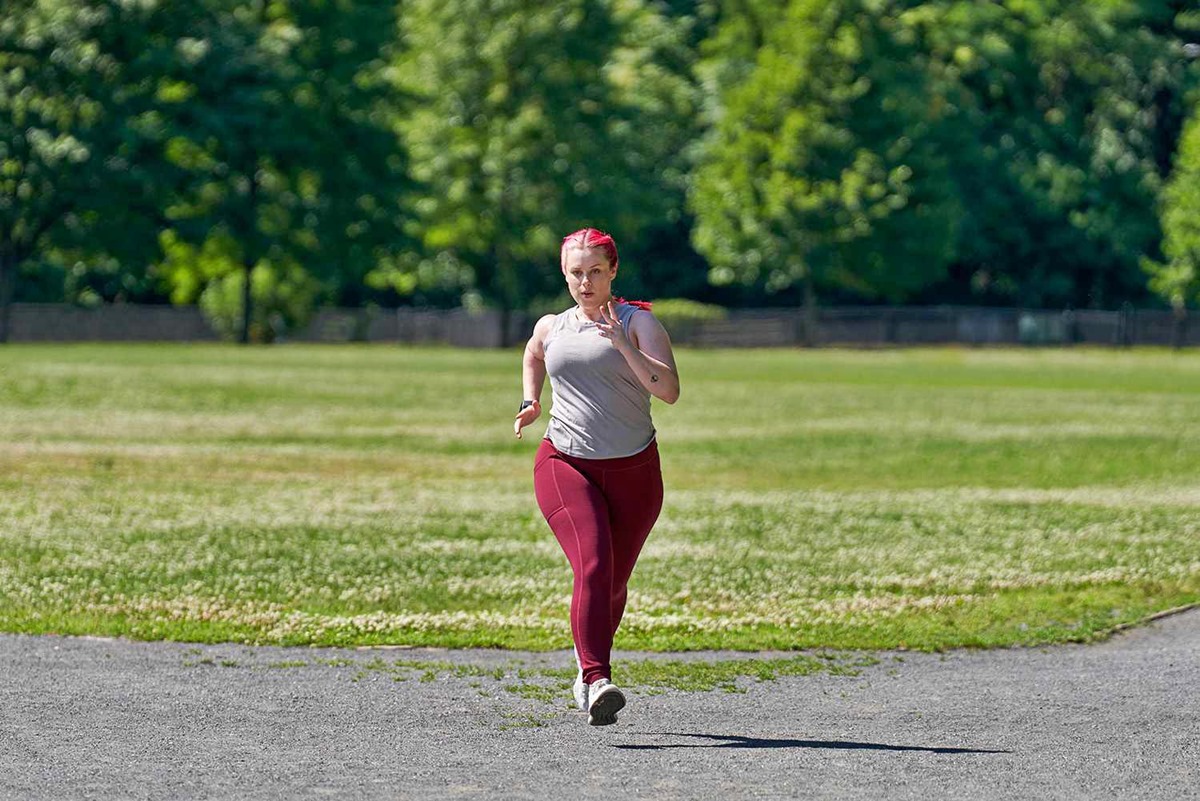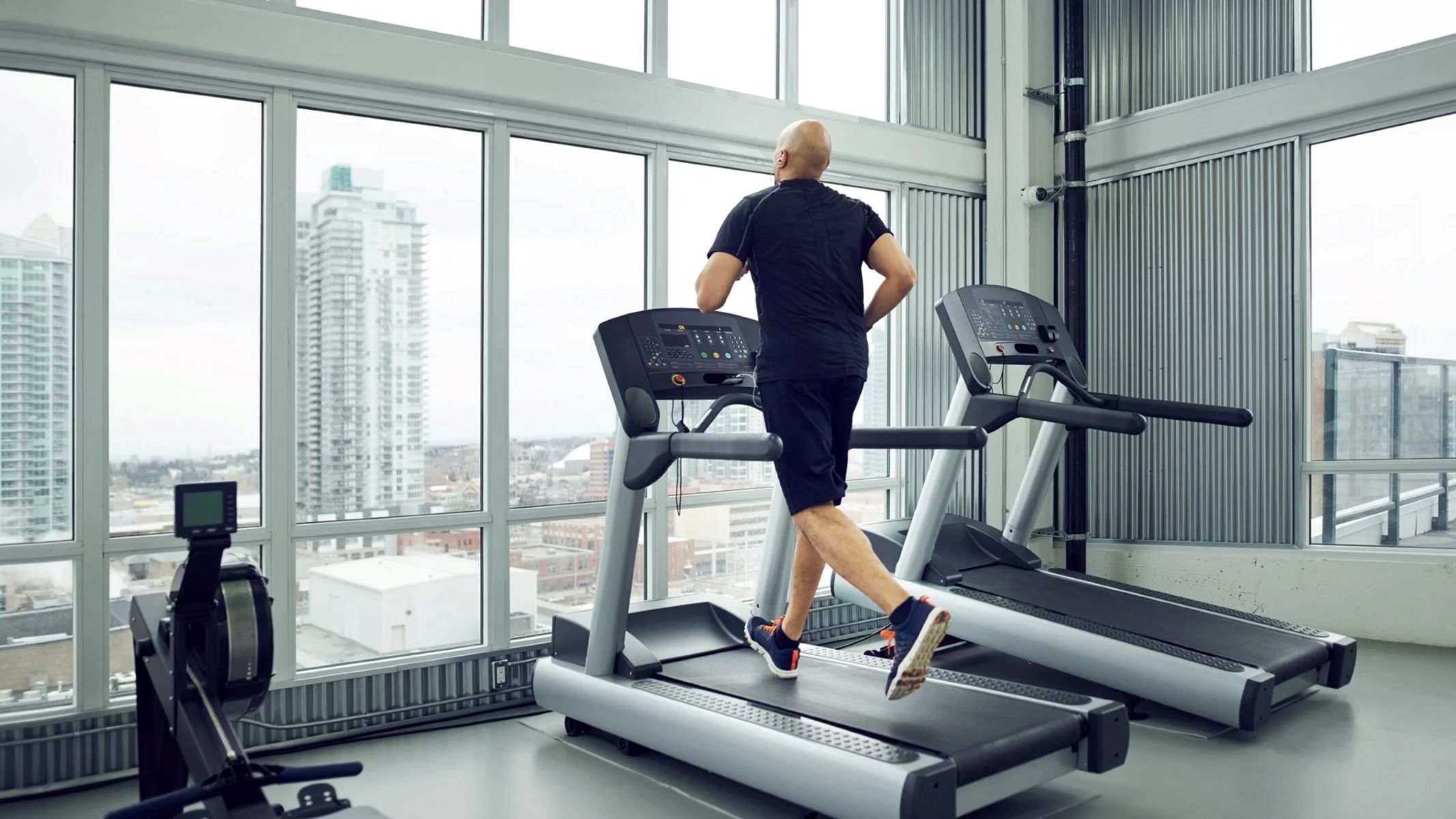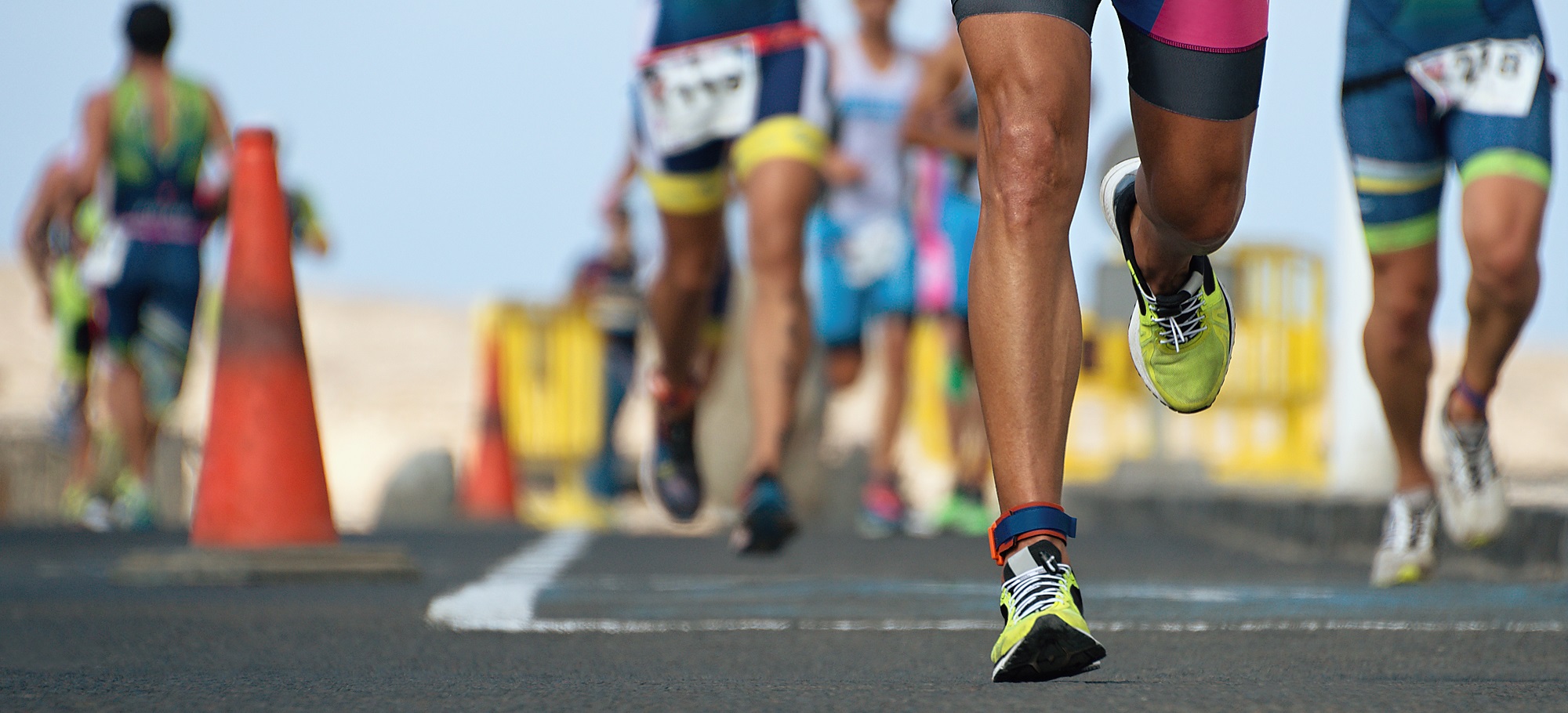

Featured
How To Sprint A Mile
Modified: January 2, 2024
Learn the best strategies and techniques to sprint a mile like a pro in this featured guide. Achieve your running goals and improve your speed with expert tips and training advice.
Introduction
Sprinting is a popular and exhilarating form of exercise that can provide numerous benefits for those looking to improve their physical fitness. While sprinting shorter distances is more commonly practiced, sprinting a mile offers a unique challenge that combines speed and endurance.
Unlike a leisurely jog, sprinting a mile requires maximum effort and intensity from start to finish. This intense burst of exercise engages multiple muscle groups, boosts cardiovascular fitness, and helps to improve overall body strength.
In addition to the physical benefits, sprinting a mile can also provide mental and emotional advantages. It requires focus, determination, and the ability to push through physical discomfort, which can help build mental resilience and self-confidence in other areas of life as well.
Whether you are a seasoned runner looking to push your personal limits or a beginner looking for a new fitness challenge, sprinting a mile can be a rewarding and satisfying goal to work towards. This article will guide you through the necessary steps to successfully sprint a mile, including proper warm-up techniques, selecting the right location, choosing the right footwear, maintaining the correct technique, and developing a structured training plan.
Benefits of Sprinting a Mile
Sprinting a mile offers a wide range of benefits for both your physical and mental well-being. Let’s explore some of the key advantages:
- Cardiovascular Fitness: Sprinting a mile is an excellent way to improve your cardiovascular endurance. The high-intensity nature of sprinting engages your heart and lungs, helping to strengthen them over time. This can improve your overall fitness level and enhance your ability to perform various activities in your day-to-day life.
- Weight Loss: Sprinting a mile can be an effective strategy for weight loss. The intense effort required to sprint at maximum speed ignites your metabolism and burns calories not only during the workout but also throughout the day. Regular sprinting sessions can help you shed excess fat and maintain a healthy weight.
- Muscle Development: Sprinting engages multiple muscle groups in your body, including your legs, core, and even upper body to some extent. The explosive nature of sprinting stimulates muscle growth and helps to develop lean muscle mass. With consistent training, you can sculpt and tone your muscles, giving your body a more defined and athletic appearance.
- Better Endurance: Sprinting a mile challenges your stamina and endurance levels. As you consistently work on improving your sprinting abilities, you will notice an increase in your overall endurance. This increase in stamina can translate into improved performance in other sports and activities that require sustained effort over extended periods.
- Mental Toughness: Sprinting a mile requires mental strength and determination. Pushing yourself to sprint at maximum speed can be physically demanding and mentally challenging. The discipline and mental resilience developed through sprinting can help you overcome obstacles in other areas of your life, boosting your confidence and self-belief.
Sprinting a mile offers a unique combination of physical and mental benefits that can have a positive impact on your overall well-being. Incorporating sprinting into your fitness routine can help you achieve your health and fitness goals while enjoying the thrill of high-intensity exercise.
Proper Warm-up and Stretching
Before sprinting a mile, it is crucial to adequately warm up your body and prepare your muscles for the intense activity ahead. A proper warm-up routine helps to reduce the risk of injury, improves flexibility, and enhances overall performance. Here are some key steps to follow for an effective warm-up:
- Start with Light Cardio: Begin your warm-up by performing 5-10 minutes of light cardio exercises such as jogging, brisk walking, or cycling. This increases your heart rate and body temperature, preparing your muscles for the upcoming intense activity.
- Dynamic Stretching: Dynamic stretching involves moving your muscles and joints through a full range of motion. Perform exercises like high knees, leg swings, arm circles, and walking lunges to warm up your major muscle groups and enhance joint mobility. Aim for 8-10 repetitions of these dynamic stretches.
- Specific Muscle Activation: Target the muscles involved in sprinting by performing specific activation exercises. This can include exercises like butt kicks, ankle circles, and hip flexor stretches. Activate each muscle group with controlled movements to help improve their flexibility and range of motion.
- Drills and Strides: Incorporate drills and strides into your warm-up routine to further prepare your body for sprinting. These can include A-skips, B-skips, grapevines, and short bursts of sprints at gradually increasing speeds. These drills help reinforce proper running mechanics and activate the muscles you will use during the sprint.
- Static Stretching: After completing the dynamic warm-up and drills, it is beneficial to perform static stretches. Focus on major muscle groups such as calves, quadriceps, hamstrings, hip flexors, and glutes. Hold each stretch for 20-30 seconds without bouncing, and remember to breathe deeply and relax into the stretch.
A proper warm-up routine prepares your body for the intense demands of sprinting a mile by increasing blood flow to the muscles, improving flexibility, and optimizing range of motion. Remember to listen to your body and adjust the intensity and duration of each warm-up component based on your fitness level and personal needs.
Choosing the Right Location
When it comes to sprinting a mile, selecting the right location can significantly impact your overall experience and performance. Here are some key factors to consider when choosing a sprinting location:
- Surface: Opt for a flat and even surface to sprint on. A track or a well-maintained road with minimal obstacles is ideal. Avoid uneven terrains or surfaces with loose gravel that can increase the risk of tripping or twisting your ankle.
- Safety: Prioritize your safety while selecting a location for sprinting. Choose areas with minimal vehicular traffic and good visibility. If you prefer outdoor locations, select well-lit areas for early morning or evening runs. Additionally, consider running in parks or designated running paths to minimize potential hazards.
- Distance: Find a location that allows you to measure the distance required to sprint a mile accurately. This can be a pre-marked track or a measured route using GPS tracking apps. Having a clear understanding of the distance covered can help you track your progress and set performance goals.
- Environment: Consider the weather conditions and surroundings of your chosen sprinting location. Extreme heat, cold, or strong winds can affect your performance and increase the risk of fatigue or dehydration. Look for locations with ample shade or access to water fountains to ensure you can stay comfortable and hydrated during your sprints.
- Motivation: Choose a location that motivates and inspires you to push yourself during your sprints. This can be a scenic trail, a stadium, or a location with landmarks that provide a sense of accomplishment. Having a visually appealing environment can help you stay focused and engaged during your sprint workouts.
Remember, the right location can have a positive impact on your mindset, motivation, and overall performance during your sprinting sessions. Take the time to explore and experiment with different locations to find the one that best suits your preferences and allows you to sprint comfortably and safely.
Selecting the Right Footwear
Choosing the right footwear for sprinting a mile is essential to ensure comfort, support, and to minimize the risk of injury. Here are some important factors to consider when selecting the right footwear:
- Cushioning: Look for shoes that provide adequate cushioning to absorb the impact of each stride. This helps to reduce stress on your joints, especially your knees and ankles, and provides a more comfortable running experience. Cushioning is particularly important when sprinting, as the high intensity can put additional strain on your feet and legs.
- Support: Opt for shoes that offer sufficient arch support and stability. Sprinting requires quick movements and changes in direction, so having proper support in your footwear can help prevent excessive pronation or supination and maintain proper alignment of your feet and ankles.
- Fit: Ensure that your sprinting shoes fit properly. They should have a snug yet comfortable fit without any excessive tightness or looseness. This helps to prevent blisters, discomfort, and potential sliding or rubbing of your feet inside the shoes during your sprints. Consider trying on shoes in the afternoon or evening when your feet tend to be slightly larger due to swelling.
- Weight: Consider the weight of the shoes you choose for sprinting. Lighter shoes can enhance your speed and agility and allow for a more efficient running stride. Look for shoes specifically designed for sprinting or lightweight running shoes that provide the necessary support and protection without weighing you down.
- Flexibility: Ensure that your sprinting shoes offer flexibility in the forefoot area. This allows for a more natural and powerful toe-off during each stride. Shoes with a stiff sole can restrict your foot’s movements and hinder your ability to generate maximum power and speed.
- Durability: Consider the durability of the shoes, especially if you plan to engage in regular sprinting workouts. Look for shoes that are made from high-quality materials and have a sturdy construction to withstand the repetitive impact of sprinting and provide long-lasting performance.
Remember, everyone’s feet are unique, so what works for one person may not work for another. It is recommended to visit a specialty running store to get expert advice and have your feet properly measured to find the right footwear for your specific needs and running style.
The Importance of Proper Technique
When sprinting a mile, mastering proper technique is crucial for optimizing performance, preventing injuries, and maximizing efficiency. Here are some key aspects of sprinting technique that you should focus on:
- Posture: Maintain an upright posture while sprinting. Keep your head up, shoulders relaxed, and core engaged. Avoid leaning forward or backward as it can disrupt your balance and reduce your speed.
- Arm Swing: Ensure that your arms are relaxed and moving in a controlled and coordinated manner. Swing them back and forth naturally in line with your body, keeping your elbows at a 90-degree angle. The movement of your arms should support the coordination and power of your legs.
- Footstrike: Focus on landing on the balls of your feet with each stride. This allows for a more efficient transfer of energy and reduces the risk of injuries associated with heel striking. Maintain a quick and light footstrike, driving your knees up and forward with each stride, resulting in a powerful push-off.
- Cadence: Aim for a quick turnover of your legs, which refers to the number of steps you take per minute. A higher cadence helps you maintain momentum and stride efficiency. Practice shortening your ground contact time by taking quick, light steps.
- Breathing: Focus on deep, rhythmic breathing while sprinting. Take deep breaths in through your nose and exhale forcefully through your mouth. This helps to oxygenate your muscles, improve performance, and maintain a steady breathing pattern throughout the sprint.
- Maintain Relaxation: It’s crucial to stay relaxed throughout the sprint. Tension in your body can hinder your performance and increase the risk of muscle strains or cramps. Consciously relax your facial muscles, shoulders, and arms to ensure smooth and efficient movement.
Proper technique not only helps to improve your sprinting speed and efficiency but also reduces the risk of common running injuries such as shin splints or muscle strains. It is beneficial to work with a coach or join a sprinting group to receive guidance and feedback on your technique, helping you make the necessary adjustments and improvements.
Setting Goals and Milestone Targets
Setting goals and milestone targets is an important aspect of sprinting a mile. It provides structure, motivation, and a sense of accomplishment as you work towards achieving your desired outcomes. Here’s how you can effectively set goals and milestone targets for your sprinting journey:
- Long-Term Goal: Start by defining your long-term goal. This could be sprinting a mile within a specific time frame or achieving a certain level of performance. Ensure that your goal is realistic, measurable, and challenging enough to keep you motivated.
- Break It Down: Break your long-term goal into smaller, manageable milestone targets. Consider breaking it down by weeks or months, focusing on enhancing different aspects of your sprinting performance such as speed, endurance, or technique.
- SMART Goals: Make sure your goals are SMART: Specific, Measurable, Attainable, Relevant, and Time-bound. For example, a SMART goal could be to increase your sprinting speed by 0.5 seconds per month over the next three months.
- Track Your Progress: Regularly monitor and track your progress towards your goals. Keep a training journal or use a running app to log your workout sessions, record your times, and document how you feel during each sprint. This will help you stay accountable and motivated throughout your journey.
- Celebrate Milestones: Celebrate each milestone you achieve along the way. Acknowledge your progress and give yourself rewards or incentives to stay motivated. This could be treating yourself to a massage, buying a new piece of workout gear, or simply indulging in a favorite healthy snack.
- Reevaluate and Adjust: Regularly reassess your goals and adjust them as needed. If you consistently surpass your targets, set higher benchmarks. If you encounter challenges, be flexible and make modifications to your goals to ensure they remain achievable.
- Seek Support: Engage with a coach, training partner, or online community to seek support and accountability. Sharing your goals with others who have similar aspirations can provide encouragement, guidance, and feedback to help you stay focused and committed.
Remember, goal setting is an ongoing process. Embrace the journey and enjoy the progress you make along the way. With clear goals and milestone targets, you’ll be motivated to consistently put in the effort and challenge yourself to reach new heights in your sprinting performance.
Training Plan for Sprinting a Mile
Having a well-structured training plan is crucial for successfully sprinting a mile. It helps you build endurance, improve speed, and gradually progress towards your goal. Here’s a sample training plan to guide you through your sprinting journey:
- Foundation Phase: Start with a foundation phase to build your cardiovascular fitness and establish a base level of endurance. Begin with a combination of shorter sprints and longer distance runs to improve your overall stamina and get your body accustomed to the demands of sprinting.
- Interval Training: Incorporate interval training into your plan. This involves alternating between periods of high-intensity sprinting and recovery periods. For example, sprint at maximum effort for 200 meters, then recover by jogging or walking for 200 meters. Repeat this cycle for a set number of repetitions, gradually increasing the distance and/or number of repetitions as your fitness improves.
- Speed Work: Include dedicated speed work sessions to improve your sprinting performance. This can involve short, explosive sprints such as 50-meter or 100-meter dashes, focusing on developing quick acceleration and maintaining high speed throughout the distance.
- Hill Sprints: Incorporate hill sprints into your training plan. Sprinting uphill challenges your muscles and improves your power and strength. Find a hill with a moderate gradient and sprint up, focusing on driving your knees up and maintaining an efficient running form.
- Long Runs: Don’t neglect longer distance runs in your training plan. While the focus is on sprinting a mile, longer runs help develop your aerobic capacity, improve endurance, and enhance recovery. Gradually increase the distance of your long runs to build your stamina.
- Rest and Recovery: Schedule rest days into your training plan to allow your body to recover and prevent overtraining. Recovery is vital for muscle repair and growth, reducing the risk of injuries, and ensuring overall performance improvement. Listen to your body and adjust your training intensity if you feel excessively fatigued or experience any pain or discomfort.
- Progressive Overload: Incorporate progressive overload into your training plan. Gradually increase the intensity, duration, or distance of your sprinting sessions to continually challenge your body and stimulate progress. This can be achieved by increasing the number of repetitions, decreasing the recovery time between sprints, or slightly increasing the intensity of your sprinting efforts.
Remember, consistency is key in any training plan. Stick to your schedule, monitor your progress, and make adjustments as needed. With a well-structured training plan, you’ll gradually improve your sprinting ability and move closer to sprinting a mile with speed and confidence.
Incorporating Interval Training
Interval training is a highly effective method for improving your sprinting abilities and enhancing your overall cardiovascular fitness. By alternating between high-intensity sprints and recovery periods, interval training pushes your limits, increases your speed, and boosts your endurance. Incorporating interval training into your sprinting routine can take your performance to the next level. Here’s how to incorporate interval training into your training plan:
- Determine Your Intervals: Start by determining the duration and intensity of your intervals. The length of your intervals will depend on your fitness level and goals. Beginners can start with shorter intervals, such as 30 seconds to 1 minute, while more experienced individuals can aim for longer intervals, up to 3 minutes or more.
- Set a Work-to-Rest Ratio: Decide on a work-to-rest ratio that works for you. This ratio determines the amount of time you spend sprinting versus the recovery period. For example, a common ratio is 1:1, where you sprint for 1 minute and then take a 1-minute recovery break. You can adjust this ratio based on your fitness level and desired level of challenge.
- Vary the Intensity: Mix up the intensity of your intervals to keep your body challenged. You can alternate between moderate-intensity intervals and high-intensity intervals. For moderate-intensity intervals, aim for a pace that is comfortably challenging, while for high-intensity intervals, give it your maximum effort and sprint at your fastest speed.
- Progress Over Time: Gradually increase the duration or intensity of your intervals as you progress. This progressive overload helps to continuously challenge your body and facilitate improvement. You can lengthen the duration of your intervals, reduce the recovery time, or increase the number of intervals to keep pushing your boundaries.
- Experiment with Different Interval Formats: There are various interval formats you can experiment with, such as pyramid intervals, ladder intervals, or fartlek training. These formats add variety to your workouts and help prevent boredom while targeting different energy systems in your body.
- Listen to Your Body: Pay attention to how your body feels during interval training. It is a high-intensity workout that puts stress on your muscles and cardiovascular system. If you feel excessively fatigued or experience any pain or discomfort, modify the intensity or duration of your intervals to avoid overdoing it.
- Warm Up and Cool Down: Prioritize a proper warm-up and cool-down routine when incorporating interval training. This helps to prepare your body for the intense workout ahead and facilitates recovery afterwards. Include dynamic stretching, light cardiovascular exercise, and mobility exercises during warm-up and cool-down to minimize the risk of injury.
Interval training can be challenging but highly rewarding. By incorporating this training method into your sprinting routine, you will improve your speed, endurance, and overall fitness level. Remember to adjust the intervals to suit your fitness level, gradually progress over time, and listen to your body for optimal results.
Recovery and Rest Days
Recovery and rest days are crucial components of any training program, including sprinting a mile. Allowing your body time to recover and rejuvenate is essential for preventing injuries, reducing fatigue, and maximizing performance. Here’s why recovery and rest days are important and how to incorporate them into your sprinting routine:
- Muscle Repair and Growth: When you sprint, your muscles undergo micro-tears and stress. Recovery days provide the necessary time for your body to repair these muscles, allowing them to grow stronger and adapt to the demands of sprinting.
- Prevention of Overtraining: Overtraining can lead to decreased performance, increased risk of injuries, and burnout. Rest days are vital in preventing overtraining by giving your body and mind a chance to recharge and recuperate. It allows your muscles and connective tissues to heal and rebuild after intense workouts.
- Performance Optimization: Recovery days help optimize performance. When you allow your body sufficient time to recover, you’ll notice improved energy levels, better focus, and enhanced muscular power. This, in turn, translates into better sprinting performance during your intense training sessions.
- Mental and Emotional Well-being: Rest days benefit your mental and emotional well-being. The demands of sprinting can be physically and mentally taxing, so taking regular breaks allows you to relax, reduce stress, and recharge mentally. This helps maintain a positive mindset and prevents burnout.
- Active Recovery: Active recovery involves engaging in low-intensity, gentle exercises on rest days. Activities such as walking, swimming, or light stretching can promote blood flow, stimulate recovery, and reduce muscle soreness. These activities should be less intense than your regular sprinting workouts and should focus on aiding the recovery process.
- Listen to Your Body: Pay attention to your body’s signals and adjust your rest days accordingly. If you’re feeling excessively fatigued, experiencing persistent muscle soreness, or having trouble completing your sprinting workouts with proper form, it may be an indication that you need additional rest and recovery.
- Strategically Plan Rest Days: Plan rest days strategically within your training program. Aim for at least one or two complete rest days per week, where you avoid any intense physical activity. Additionally, consider alternating between hard and easy training days to allow for proper recovery and adaptation.
Remember, rest days are just as important as training days in achieving optimal results in sprinting a mile. By incorporating regular and strategic rest days into your schedule, you’ll give your body the opportunity to recover, rebuild, and perform at its best on sprinting days.
Nutrition and Hydration Guidelines
Nutrition plays a vital role in fueling your body for optimal performance while sprinting a mile. Proper nutrition and hydration are crucial for sustaining energy levels, enhancing recovery, and supporting overall health. Here are some essential guidelines to help you nourish your body for successful sprinting:
- Stay Hydrated: Hydration is key for performance and overall well-being. Drink water regularly throughout the day to maintain proper hydration levels. During intense workouts, consider consuming a sports drink or electrolyte-infused water to replenish fluids and electrolytes lost through sweat.
- Prioritize Carbohydrates: Carbohydrates are the primary source of energy for sprinting. Consume complex carbohydrates such as whole grains, fruits, vegetables, and legumes to provide sustained energy. Prioritize carbohydrate-rich meals and snacks before and after workouts to fuel your muscles and support recovery.
- Include Protein: Protein is essential for muscle repair and growth. Include lean sources of protein such as poultry, fish, beans, tofu, or Greek yogurt in your meals and snacks. Aim to consume protein within an hour of completing your sprinting workouts for optimal muscle recovery.
- Moderate Fat Intake: Include healthy fats in your diet to support overall health and provide satiety. Opt for sources such as avocados, nuts, seeds, and olive oil. However, be mindful of consuming too much fat immediately before or during your sprinting sessions, as it can be more difficult to digest and may affect performance.
- Timing of Meals: Plan your meals to ensure proper fueling and digestion before sprinting. Aim to have a balanced meal containing carbohydrates, protein, and a small amount of healthy fats two to three hours before your training session. If you have less time, opt for a lighter snack 30 minutes to an hour before sprinting.
- Post-Workout Recovery Fuel: After sprinting, prioritize a post-workout meal or snack that contains both carbohydrates and protein. This combination helps replenish glycogen stores in your muscles and aids in muscle repair and recovery. Consider options such as a protein shake, yogurt with fruit, or a balanced meal consisting of lean protein and whole grains.
- Listen to Your Body: Every individual is unique, and it’s important to listen to your body’s signals. Pay attention to how different foods and hydration strategies make you feel during your sprinting sessions. Adjust your nutrition plan based on your body’s needs and preferences.
- Overall Health and Balance: While sprinting a mile, it’s crucial to maintain an overall healthy and balanced diet. Include a variety of fruits, vegetables, whole grains, and lean proteins to ensure you’re getting an array of essential nutrients. Prioritize quality foods that nourish your body and support your overall well-being.
Remember, proper nutrition and hydration are key aspects of your sprinting journey. Adopting a well-rounded and balanced approach to your diet will help fuel your body, enhance your performance, and support your overall health and well-being.
Avoiding Common Injuries and Overtraining
When sprinting a mile, it is important to prioritize injury prevention and avoid overtraining. By taking precautionary measures and listening to your body, you can reduce the risk of injuries and ensure that you’re training effectively. Here are some tips for avoiding common injuries and overtraining:
- Gradual Progression: Gradually increase the intensity, duration, and frequency of your sprinting workouts. Rapidly increasing these factors without allowing your body to adapt can lead to overuse injuries. A gradual progression allows your muscles, tendons, and ligaments to strengthen and adjust to the demands of sprinting.
- Proper Warm-up and Cool-down: Prioritize a thorough warm-up and cool-down routine to prepare and recover your muscles. This helps to prevent muscle strains, cramps, and other common injuries. Incorporate dynamic stretching exercises, mobility drills, and gentle cardiovascular activity to warm up your muscles and improve their flexibility.
- Listen to Your Body: Pay attention to any signs of discomfort, pain, or fatigue during your workouts. If you experience persistent pain or discomfort, take a break and allow your body to rest and recover. Pushing through intense pain can exacerbate injuries and lead to more serious issues.
- Include Rest Days: Include dedicated rest days in your training plan to allow your body time to recover and repair. Overtraining can lead to physical and mental fatigue, decreased performance, and a higher risk of injuries. Rest days help prevent overtraining and allow for proper muscle recovery and adaptation.
- Strength and Conditioning: Incorporate strength and conditioning exercises into your training routine. Strengthening the muscles around your joints, particularly your legs, can help prevent common injuries. Include exercises such as squats, lunges, calf raises, and core exercises to improve overall strength and stability.
- Flexibility and Mobility: Maintain good flexibility and mobility through regular stretching and mobility exercises. This helps prevent muscle imbalances, improves joint range of motion, and reduces the risk of strains and sprains. Incorporate static stretching exercises, foam rolling, and yoga or Pilates sessions into your routine.
- Optimal Footwear and Equipment: Ensure you have the right footwear that provides adequate support and cushioning for sprinting. Ill-fitting or worn-out shoes can increase the risk of foot, ankle, and knee injuries. Additionally, consider using proper running gear and protective equipment to further prevent injuries and optimize your performance.
- Listen to Expert Advice: Seek guidance from experienced coaches, trainers, or healthcare professionals. They can provide valuable insights and guidance on proper training techniques, injury prevention strategies, and effective recovery methods. Their expertise can help you avoid common pitfalls and make informed decisions regarding your sprinting training.
By incorporating these injury prevention strategies and being mindful of overtraining, you can enjoy the benefits of sprinting a mile while minimizing the risk of injuries and optimizing your performance. Remember, taking care of your body is essential for long-term athletic success and overall well-being.
Preparing for a Sprinting Race
Preparing for a sprinting race requires careful planning, mental preparation, and physical readiness. Whether it’s a local track meet or a competitive event, here are some key steps to help you prepare for a sprinting race:
- Set Clear Goals: Define your race goals and establish a target time or performance objective. Having a clear goal in mind will help you stay focused and motivated during your training and provide a benchmark for success.
- Tapering: Gradually reduce the volume and intensity of your training in the days leading up to the race. This allows your body to recover, replenish glycogen stores, and be in peak condition for the competition. Tapering prevents fatigue and helps you feel fresh and ready on race day.
- Visualize Success: Practice visualization techniques to mentally rehearse your race. Imagine yourself sprinting with perfect form, maintaining speed, and crossing the finish line with a strong performance. Visualizing success can help boost confidence and prepare your mind for the challenge ahead.
- Race Strategy: Develop a race strategy based on the distance and your strengths as a sprinter. Determine how you will pace yourself, when to accelerate, and how to effectively use your energy throughout the race. Adapting your strategy to the specific race conditions and competitors can give you a competitive edge.
- Final Practice Sessions: Prioritize quality over quantity in your final practice sessions before the race. Focus on short, intense bursts of sprints to simulate race conditions and practice your race strategy. Pay attention to your form, start technique, and maintaining speed under pressure.
- Nutrition and Hydration: Follow a balanced and nutritious diet leading up to the race. Fuel your body with a mix of carbohydrates, protein, and healthy fats to provide sustained energy. Stay hydrated by drinking water regularly and consume a meal or snack rich in carbohydrates a few hours before the race.
- Rest and Recovery: Ensure you get ample rest leading up to the race. Aim for quality sleep to allow your body to recover and regenerate. Avoid any strenuous activities or excessive training in the day or two before the race to ensure you’re well-rested and mentally focused.
- Warm-up Routine: Develop a thorough warm-up routine to prepare your body for the race. Include dynamic stretching, mobility exercises, and strides to activate your muscles and improve your range of motion. Gradually increase the intensity to raise your heart rate and warm up your muscles.
- Stay Calm and Focused: On race day, stay calm, focused, and positive. Trust in your preparation and believe in your abilities. Control your nerves and channel your energy into a confident and composed mindset. Surround yourself with supportive individuals who can provide encouragement and motivation.
- Post-Race Recovery: After the race, prioritize recovery to aid in muscle repair and reduce soreness. Engage in light stretching, foam rolling, and gentle cardio activities to cool down and promote blood flow. Refuel your body with a nutritious meal, hydrate adequately, and give yourself time to celebrate your accomplishments.
Remember, preparation is key to performing your best in a sprinting race. By following these steps and trusting in your training, you’ll be well-equipped to face the challenge and achieve your race goals.
Conclusion
Sprinting a mile is a challenging yet rewarding endeavor that requires proper preparation, technique, and dedication. By following the guidelines outlined in this article, you can maximize your performance and reduce the risk of injuries. Remember to incorporate a proper warm-up and cooldown routine, choose the right location and footwear, and focus on maintaining proper technique throughout your sprints. Setting realistic goals, tracking your progress, and incorporating interval training and rest days into your training plan are essential for sustained improvement. Additionally, paying attention to your nutrition and hydration, and taking steps to avoid common injuries and overtraining, will help you optimize your sprinting journey. Lastly, preparing for a sprinting race involves setting clear goals, visualizing success, developing a race strategy, and tapering your training in the days leading up to the event. By following these steps and staying committed to your training, you’ll be well-equipped to sprint a mile with speed, strength, and confidence.








